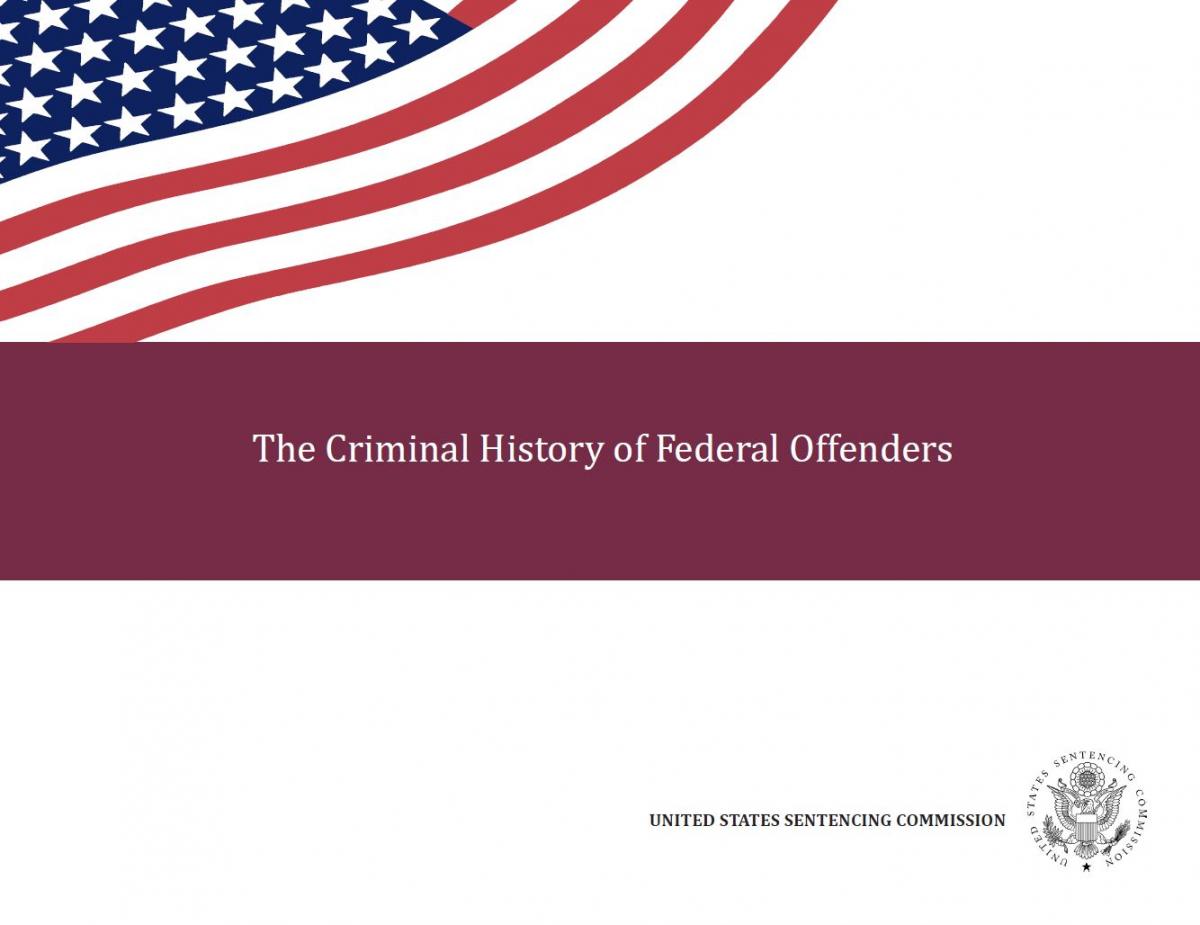Summary
(Published May 17, 2018) The publication The Criminal History of Federal Offenders provides for the first time complete information on the number of convictions and types of offenses in the criminal histories of federal offenders sentenced in a fiscal year.
While the Commission has collected the criminal history points and Criminal History Category (CHC) as determined under the guidelines, it has not collected complete information on the number of convictions or the types of offenses in the criminal histories of federal offenders until now. The Commission is now able to utilize recent technological improvements to expand the scope of information it collects on an offender’s criminal history and provide a more complete assessment of the criminal history of federal offenders. In completing this report, the Commission collected additional details about the criminal histories for 61,946 of the 67,742 federal offenders sentenced in fiscal year 2016 for whom complete documentation was submitted to the Commission.
-
Full Report
- Figures & Tables (full-sized)
-
Other Recidivism Reports:
- Recidivism Among Federal Firearms Offenders (June 2019)
- Recidivism Among Federal Violent Offenders (January 2019)
- The Effects of Aging on Recidivism (December 2017)
- Recidivism Among Federal Drug Trafficking Offenders (February 2017)
- Recidivism Overview (March 2016)
Key Findings
Key findings of the Commission’s study are as follows:
- Almost three-quarters (72.8%) of federal offenders sentenced in fiscal year 2016 had been convicted of a prior offense. The average number of previous convictions was 6.1 among offenders with criminal history.
- Public order was the most common prior offense, as 43.7 percent of offenders with prior criminal history had at least one conviction for a public order offense.
- A conviction for a prior violent offense was almost as common as prior public order offenses, as 39.5 percent of offenders with criminal history had at least one prior violent offense. Assault was the most common violent offense (29.5%), followed by robbery (8.1%), and rape (4.4%). Just under two percent of offenders with criminal history had a prior homicide offense.
- The nature of offenders’ criminal histories varied considerably by their federal instant offense. The substantial majority (91.7%) of firearms offenders had at least one previous conviction compared to about half of fraud (52.4%) and child pornography (48.2%) offenders. Firearms offenders were also most likely to have violence in their criminal histories, as 62.0 percent of firearms offenders with a previous conviction had a violent previous conviction. Fraud offenders were the least likely of offenders with criminal history to have a violent previous conviction (26.2%).
- Most (86.6%) federal offenders with criminal history had convictions that were assigned criminal history points under the guidelines. Offenders who had at least one three-point conviction were the most likely of all offenders with convictions to have a murder (3.8%) or rape/sexual assault (7.0%) offense in their criminal histories.
- A criminal history score of zero does not necessarily mean an offender had no prior criminal history. Almost one in ten offenders (9.8 percent) in fiscal year 2016 had a criminal history score of zero but had at least one prior conviction.

